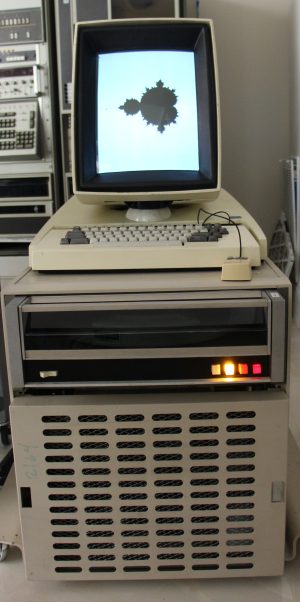Ted Thaï
Il y a quarante ans aujourd’hui, un nouveau type d’ordinateur personnel a été annoncé qui allait changer le monde pour toujours. Deux ans plus tard, il était presque complètement oublié.
L’Apple Lisa a débuté en 1978 en tant que nouveau projet pour Steve Wozniak. L’idée était de créer un ordinateur avancé utilisant un processeur de tranches de bits, une première tentative d’informatique évolutive. Woz a été distrait par d’autres choses et le projet n’a commencé sérieusement qu’au début de 1979. C’est à ce moment-là que la direction d’Apple a fait appel à un chef de projet et a commencé à embaucher des personnes pour y travailler.
Lisa a été nommée d’après la fille de Steve Jobs, même si Jobs a nié le lien et sa filiation. Mais la chose la plus intéressante à propos de l’ordinateur Lisa était la façon dont il a évolué pour devenir quelque chose d’unique : c’était le premier ordinateur personnel avec une interface utilisateur graphique (GUI).
La vision prend forme
Les interfaces graphiques ont été inventées au Palo Alto Research Center (PARC) de Xerox au début des années 1970. Le poste de travail Alto, qui n’a jamais été vendu au public, avait un écran bitmap qui imitait la taille et l’orientation d’une feuille de papier. Les chercheurs du PARC ont écrit un logiciel qui affichait des fenêtres et des icônes, et ils ont utilisé une souris pour déplacer un pointeur sur cet écran.

Ken Shérif
Jef Raskin, un des premiers employés d’Apple qui a écrit le manuel d’Apple ][, had visited PARC in 1973. He believed that GUIs were the future. Raskin managed to persuade the Lisa project leader to change the computer into a GUI machine. However, he couldn’t convince Jobs, who thought Raskin and Xerox were incompetent.
Raskin altered his approach and got graphics programmer Bill Atkinson to propose an official tour of PARC in November 1979. Because Jobs thought Atkinson was great, he agreed to come along. Jobs’ visit to PARC became the stuff of legend, a tale of a brilliant visionary seeing the future of computing for the first time. But in reality, Atkinson was already working on LisaGraf—the low-level code that would power the Lisa’s GUI—months before Jobs saw the PARC demo.
The Lisa’s hardware changed as well. The team abandoned the bit-slice processor and adopted Motorola’s new 68000 CPU. The 68000 was a 16/32-bit chip and used a 24-bit address bus, giving it a maximum of 16 megabytes of memory. This was fine, as memory prices were still sky-high in 1980, and most computers of the day had a maximum of 64 kilobytes of RAM.
In January 1981, senior leadership at Apple got tired of Jobs’ constant interference and micromanagement of the Lisa project and officially removed him from the team. Jobs seethed, then took over a smaller skunkworks project being run by Raskin. This would become important later.
By early 1982, the Lisa hardware was mostly finalized. However, the software was still in flux. A team of designers—including Larry Tesler, who had left PARC to join Apple—had been busy doing tons of research, prototyping, and testing. The main question they had was: How should the Lisa’s GUI actually work?
-
June 1979: A mockup of an early Lisa interface, running on an Apple ][[
Magazine Interactions
-
Août 1980 : Une maquette de menus et de boîtes de dialogue, fonctionnant sur un prototype Lisa.
Magazine Interactions
-
Octobre 1980 : Une maquette de la nouvelle barre de menu unique. Notez la « Note de Jef ».
Magazine Interactions
-
Décembre 1980 : Un navigateur de fichiers multi-colonnes abandonné. Cette conception reviendrait dans NeXTstep et OS X.
Magazine Interactions
-
Juillet 1981 : Le localisateur de fichiers « Vingt questions ». Cela a fonctionné, mais personne ne l’a trouvé “amusant”, alors l’équipe est revenue à l’approche basée sur les icônes.
Magazine Interactions
-
Août 1982 : L’interface graphique de Lisa est enfin finalisée.
Magazine Interactions
Dans un article du magazine Interactions, les designers Roderick Perkins, Dan Smith et Frank Ludolph ont décrit comment l’interface de Lisa est passée des premiers prototypes à un bureau familier avec des icônes, puis s’est éloignée de ce modèle, puis est finalement revenue à un document basé sur des icônes. approche centrée. L’objectif était de rendre la Lisa puissante et amusante à utiliser.
Enfin, la Lisa était prête à être dévoilée au public. Le 19 janvier 1983, Apple a annoncé l’ordinateur, qu’il a décrit avec précision comme “révolutionnaire”.











